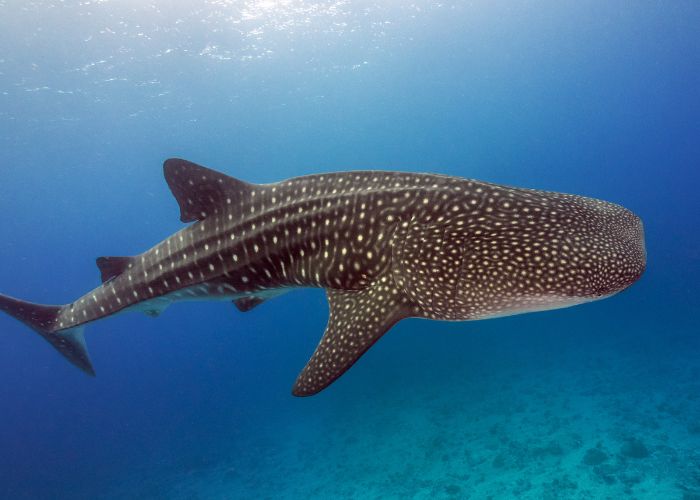MADRID – Divers who checked fishing nets at the tuna catch (la Almadraba) off the coast of the Spanish enclave of Ceuta, had a unique experience on Tuesday. They found a whale shark entangled in the nets.
It is the world’s largest saltwater fish whose presence in the Mediterranean is very uncommon. Furthermore, it is the first time a specimen of this class of shark has been sighted in the area.
The divers from Ceuta’s Centre for the Study and Conservation of Marine Animals (CECAM) worked for almost five hours to free the animal. Cecam estimated that the whale shark was ten to twelve metres long.
In statements to Ceuta Actualidad, CECAM President Juan Carlos Rivas underlined the extraordinary nature of the divers’ encounter with this whale shark. In addition, he pointed out it’s “a fish that I’ve come to see in the Maldives and Baja California. But it’s the first time it’s been sighted in the Mediterranean.”
Whale sharks have a penchant for warm water, which explains their presence in all tropical seas. Despite its colossal appearance, it is a docile animal that feeds exclusively on plankton.
What did the whale shark do at Ceuta?
The director of Ceuta’s Sea Museum, Óscar Ocaña, congratulated Cecam members for their sighting and release of the specimen. He noted in El Faro de Ceuta there are several explanations for the animal’s presence at this Mediterranean site.
Related post: Hammerhead shark spotted near the coast of Galicia
Based on the MIMAR project, which monitors marine ecosystems in Micronesia (North Africa, Azores, Madeira, the Canary Islands and Cape Verde), he indicates that in Cape Verde it is common to see whale sharks in summer. He adds that it is an animal that moves through surface waters in search of agglomerations of plankton and small fish. Ceuta’s waters are among the most productive in the Mediterranean in this regard.
Searching for new foraging areas
On the other hand, Ocaña does not rule out that this specimen was “looking for new feeding grounds. In his view, it is possible that these new migrations are due to global change and thus to the overexploitation of fishing grounds by humans.” forced to seek new feeding grounds”.
On the other hand, the director quotes the scientific coordinator of the MIMAR project, Rogelio Herrera. He explains in a study that “it is not so unreasonable to see a whale shark in these waters because they usually travel with species like tuna, because they eat partly the same.


